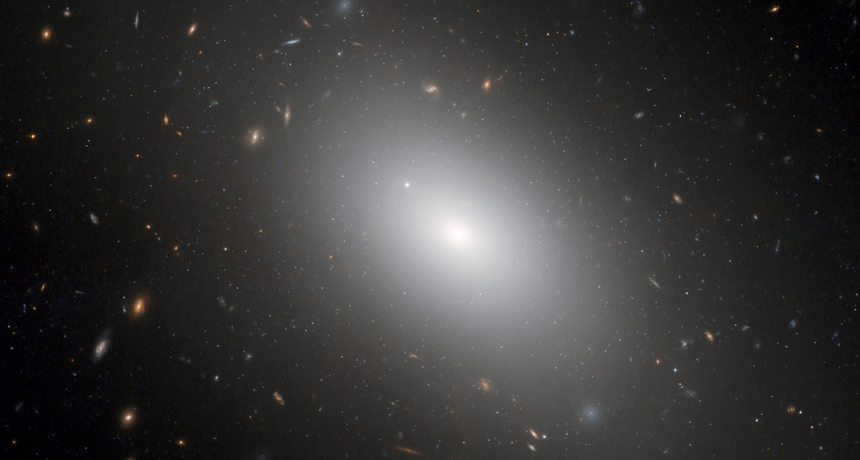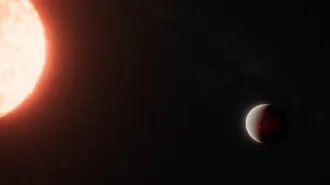Galaxy seed found from 3 billion years after Big Bang
Dense stellar cluster may show how massive galaxies get their start

ALL GROWN UP Giant elliptical galaxies like NGC 1132 (shown), which contains trillions of suns and is more than twice as wide as the Milky Way, could have grown from a dense cluster of stars such as one astronomers have identified.
NASA, ESA and the Hubble Heritage (STScI/AURA)-ESA/Hubble Collaboration







